Storing gasoline in your garage requires careful consideration to ensure safety and prevent accidents. Gasoline is a highly flammable substance, and improper storage can lead to dangerous situations such as fires or harmful fumes. By following proper guidelines and taking the necessary precautions, you can store gasoline safely and effectively for future use.
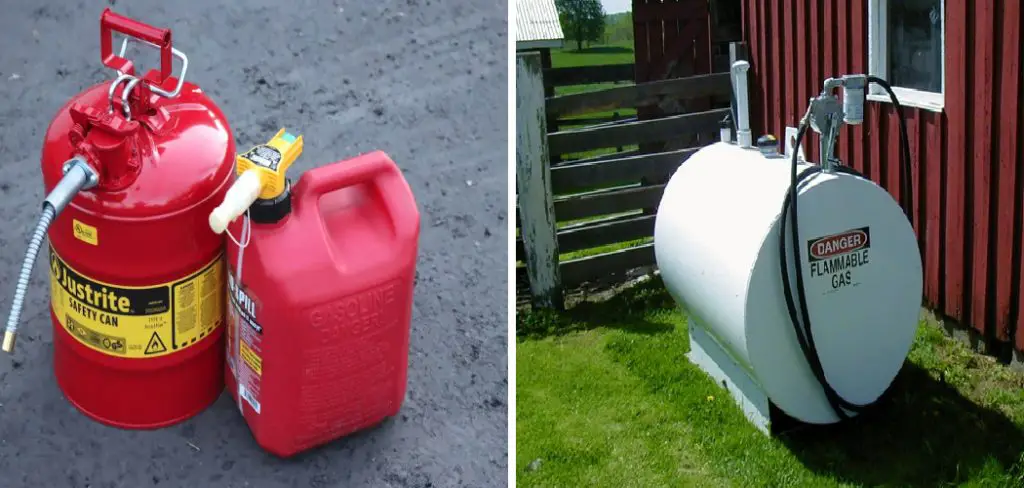
This guide on how to store gasoline in garage will walk you through the essential steps and tips for storing gasoline in your garage.
Why Store Gasoline in the Garage?
There are various reasons why you may need to store gasoline in your garage. It could be for emergency situations, such as power outages or natural disasters, where having a backup supply of fuel can be crucial. You may also store gasoline for recreational purposes, such as for lawnmowers, generators, or other small engines.
Whatever the reason may be, it is important to follow safety precautions and guidelines to prevent any accidents or hazards from occurring. Gasoline is a flammable liquid that can release fumes that are highly explosive when exposed to heat sources or electrical sparks.
Needed Materials
When storing gasoline, it is important to have the necessary materials on hand to ensure safe handling and storage. These materials may include:

Approved Gas Can:
Choose a gas can that is approved for gasoline storage and has a secure lid or cap. This will prevent any spills or leaks from occurring.
Funnel:
A funnel can be used to pour gasoline into the gas can without spilling. It is important to use a clean and dry funnel to avoid contamination.
Safety Gloves and Eyewear:
Wearing gloves and eyewear while handling gasoline is crucial in preventing skin irritations or eye injuries. These should be made of non-absorbent material such as rubber or nitrile.
Fire Extinguisher:
Having a fire extinguisher nearby when working with gasoline can be a lifesaver in case of an emergency. Make sure it is rated for flammable liquids.
Safety Precautions
In addition to having the necessary materials and equipment, there are some important safety precautions to keep in mind when handling gasoline.
- Always have proper ventilation, whether you are working indoors or outdoors.
- Never smoke or use any open flames near gasoline.
- Do not wear loose clothing or jewelry that could potentially catch fire.
- Avoid using cell phones or other electronic devices while handling gasoline as they can create sparks.
- Keep children and pets away from the area where gasoline is being used.
- If you accidentally spill gasoline on yourself, immediately remove contaminated clothing and wash the affected area with soap and water.
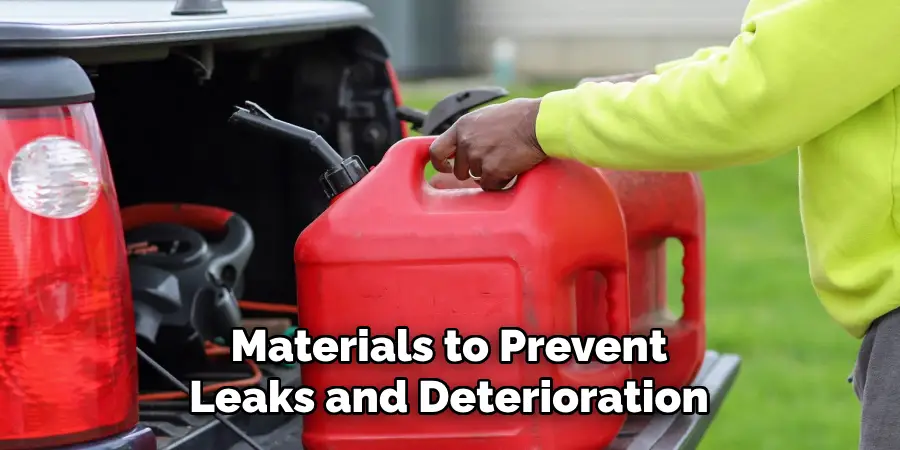
7 Simple Steps on How to Store Gasoline in Garage
Step 1: Choose a Suitable Container
Select a high-quality, approved gasoline container specifically designed for fuel storage. Look for containers that meet safety standards, such as those certified by the Department of Transportation (DOT) or Underwriters Laboratories (UL). These containers typically feature secure, airtight lids and are made from durable, non-corrosive materials to prevent leaks and deterioration.
Avoid using random or reused containers, as they may not be safe for storing gasoline and could lead to dangerous spills or contamination. Additionally, make sure to label the container clearly as “Gasoline” and store it in a well-ventilated area away from heat sources.
Step 2: Filling Up Your Gasoline Tank
When it comes time to fill up your gasoline tank, there are a few important precautions to keep in mind. First and foremost, always turn off the engine of your vehicle before beginning to refuel. This will prevent any possible spark from igniting fumes and causing a fire.
Before inserting the nozzle into your gas tank, make sure to touch a metal part of your car to discharge any static electricity. It’s also important to avoid overfilling your tank – stop filling when the pump automatically shuts off or when you see fuel come up to the neck of the tank.
Step 3: Pay for Your Fuel
After filling your gas tank, it’s time to pay for your fuel. Most gas stations have a few different payment options – you can either pay with cash or credit/debit card at the pump, or you can go inside the station and pay at the register.
If you choose to pay at the pump, be sure to read and follow any instructions on the screen carefully. Some pumps may require you to prepay a certain amount before pumping, while others may allow you to select the amount of fuel you want to purchase. If you’re paying with a credit or debit card, be sure to insert or swipe your card in the correct direction and follow any prompts on the screen. Once your transaction is complete, be sure to take your receipt if you need one.
Step 4: Be Mindful of Safety
While filling up your vehicle, it’s important to be mindful of safety. Here are some tips to keep in mind:
- Avoid smoking or using any open flames near the pump.
- Turn off your engine before fueling.
- Never leave the pump unattended while fueling.
- If you notice any spills or leaks, alert an attendant immediately and do not attempt to clean it up yourself.
It’s also a good idea to make sure your car is in park and that you have securely closed your gas cap before leaving the pump area.
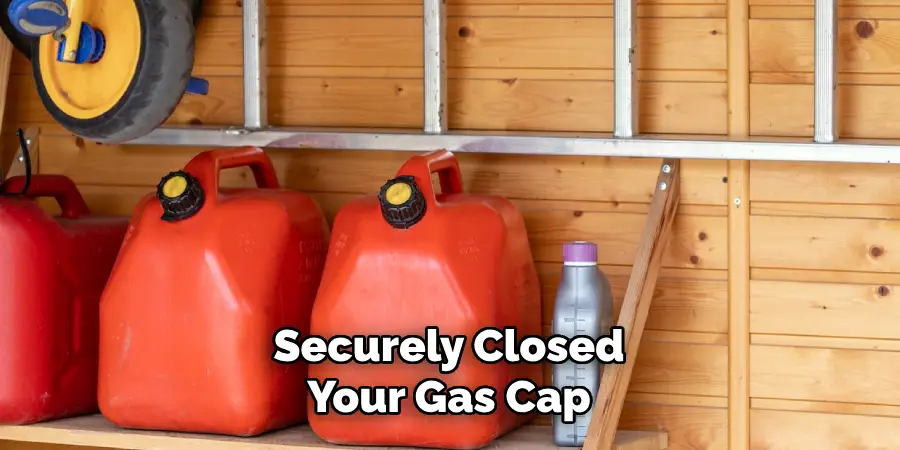
Step 5: Follow Up on Your Purchase
Once you’ve completed your transaction at the gas station, there are a few things you should remember to do before hitting the road again.
First, check your receipt and make sure the amount charged matches the price you saw on the pump. If there are any discrepancies or errors, bring them to the attention of the attendant or gas station manager.
Next, take a moment to look at your fuel gauge and odometer. This will give you an idea of how much fuel you’ve added and how far you can expect to go before needing another fill-up.
Step 6: Double-check Your Gas Cap
After filling up at the gas station, it’s always a good idea to double-check that your gas cap is securely closed. A loose or missing gas cap can lead to several issues such as reduced fuel efficiency and potentially harmful emissions.
If you notice that your gas cap is missing or not properly tightened, inform the attendant or store manager so they can help you find a replacement or tighten it for you.
Step 7: Dispose of Any Trash and Drive Away Safely
Once you’ve completed all the necessary steps at the gas station, make sure to dispose of any trash in the designated bins before driving away.
Remember to drive safely and follow all traffic laws on your way back onto the road.
If you have any concerns or issues with your vehicle after filling up, safely pull over to the side of the road and address them. It’s important to prioritize your safety while driving, and properly maintaining your vehicle can help prevent unexpected breakdowns.
Driving with a full tank of gas also means you won’t have to stop for gas as frequently, reducing the risk of running out of gas in an unsafe location.
By following these steps on how to store gasoline in garage and being mindful at the gas station, you can ensure that refueling is a safe and hassle-free experience. Remember to always maintain proper hygiene by washing your hands after handling fuel and disposing of any paper or trash in designated areas.
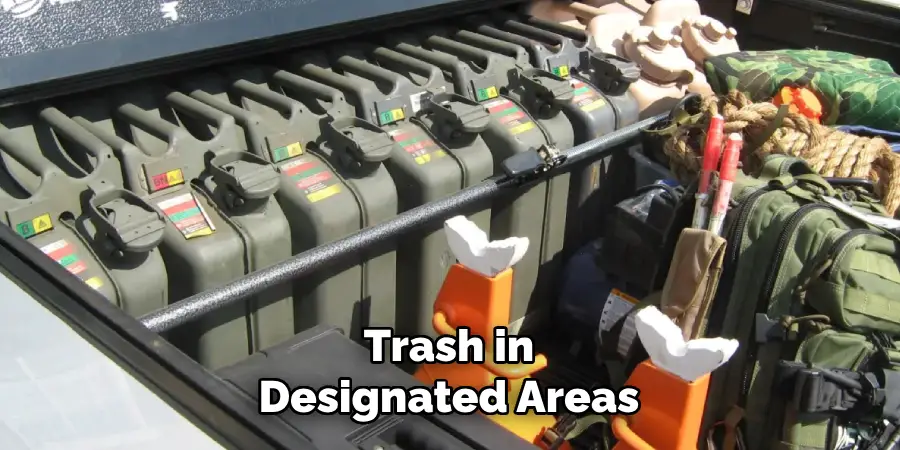
Additional Tips for Safe Driving and Vehicle Maintenance
- Always wear your seatbelt while driving, regardless of the distance. Seatbelts reduce the risk of injury in case of an accident.
- Avoid using your phone or any other distractions while driving. It is important to stay focused on the road at all times.
- Regularly check and maintain your vehicle’s tires, brakes, and lights to ensure they are in proper working condition.
- Keep a first aid kit and emergency supplies in your car in case of any unexpected situations on the road.
- Follow traffic rules and speed limits to avoid accidents and tickets.
- Plan your route before driving to unfamiliar places, as this can help you avoid getting lost or ending up on unsafe roads.
- Be aware of weather conditions and adjust your driving accordingly. If it is raining or snowing, use extra caution and decrease your speed.
- Avoid distractions while driving, such as texting or using your phone. Keep your focus on the road at all times.
- Make sure to have proper car insurance coverage in case of any accidents or damages on the road.
- Stay alert and aware of your surroundings while driving. Look out for other cars, pedestrians, and potential hazards on the road.
Frequently Asked Questions
Q1: Is It Important to Have Car Insurance?
A1: Yes, having car insurance is extremely important. It provides financial protection in case of accidents or damages on the road. Driving without proper insurance coverage can result in legal and financial consequences.
Q2: What Does Car Insurance Cover?
A2: The coverage of car insurance may vary depending on the type of policy you have. In general, car insurance covers damages to your vehicle and other vehicles involved in an accident, medical expenses for injuries sustained by yourself or others, and legal fees if a lawsuit is filed against you.
Q3: How Do I Choose the Right Car Insurance?
AA3: When choosing car insurance, it’s important to consider factors such as your budget, driving history, type of vehicle, and coverage needs. It’s also helpful to research different insurance providers and compare their rates and policies before making a decision.
Q4: Can I Customize My Car Insurance Coverage?
A4: Yes, many car insurance companies offer customizable coverage options to fit your specific needs. You can typically choose from a variety of deductibles, liability limits, and additional coverage such as roadside assistance or rental car reimbursement. It’s important to carefully review and understand the various options available to you before customizing your coverage.
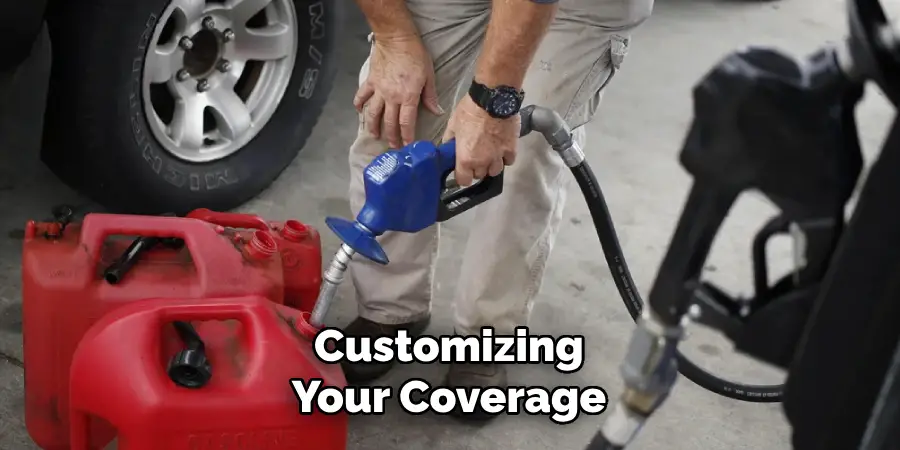
Conclusion
Driving safely is a responsibility that requires attention, preparation, and caution. By following these safety tips on how to store gasoline in garage, you can help protect yourself, your passengers, and others on the road.
Prioritize safety every time you get behind the wheel and make responsible choices to ensure a safer driving experience for everyone.
I am Rick. I grew up helping my dad with his handyman service. I learned a lot from him about how to fix things, and also about how to work hard and take care of business. These days, I’m still into fixing things- only now, I’m doing it for a living.
I’m always looking for new ways to help people grow and develop. That’s why I have created this blog to share all my experience and knowledge so
that I can help people who are interested in DIY repair.

